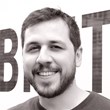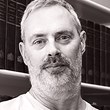Program 2020
The time zone for the program is CET.
Day 1, Tuesday November 24
07.30 - 16.30
Funka’s digital information desk is open for questions and you can log in.
08.00 - 09.00 General Track
Introduction for beginners (outside of the conference)
If you feel the Accessibility Days are a bit too advanced, we offer a short run through of the basics of accessibility just before the event starts. This introduction to web accessibility in 60 minutes is your opportunity to learn the most important things – very fast!
Price: 160 EUROS per person.
09.30 - 09.40 General Track
Conference opening by moderators
The moderators of Funka Accessibility Days present themselves and introduce the conference.

Main moderator
Eva-Karin Anderman works with design-driven innovation and social change in her own company Future is free AB. She has previously worked at Usify, SVID and Almega and in UserForum. Eva-Karin has also led national design-driven processes such as Closer! People Powered Future and the Design Agenda.

Moderator of the technology track
Detlev Fischer is the Managing Director of DIAS, a company engaged in research in the field of inclusion und usability. DIAS offers accessibility and usability testing as well as training and consulting services. Detlev is active in standards development as invited expert of W3C's Accessibility Guidelines Working Group.
09.40 - 10.00 General Track
Accessibility = efficiency for your users and your organisation
People of varying abilities can experience barriers to integration. This it true for the users of your services as well as the professionals handling the services internally. Technological solutions help to overcome certain barriers, but full independence remains impossible without developers and content creators who care about accessibility. Some may see this responsibility as a burden, but this presentation shows how an accessible experience for your visitors/clients can make your life easier and benefit your organisation.

Bart Simons works at AnySurfer, a Belgian initiative to raise awareness and spread knowledge about digital accessibility. As a IAAP certified Web Accessibility specialist his main tasks are teaching, auditing and consultancy. He also contributes to the advocacy work of the European Disability Forum and ANEC, the consumer’s voice in standardisation.
10.00 - 10.50 General Track
Panel: Do we have the right tools for inclusion?
Panel discussion on policy work, legislation and standardization. How are we doing and what is the next steps? How should the level of accessibility increase in an efficient way? Where does the responsibility lay? Leading panelists from the European Commission, national monitoring authorities and representatives from end user organizations contribute to this important discussion. Questions from the audience is welcome!

Alejandro Moledo del Río is the Policy Coordinator at the European Disability Forum (EDF). He is leading the advocacy work towards the European Parliament, and focuses on policies concerning political participation and accessibility for persons with disabilities to Information and Communication Technologies (ICT), as well as EDF involvement in standardization activities. Additionally, he also supports the work of the European Parliament Disability Intergroup as its secretariat.

Jorge Fernandes is a senior technician of the Portuguese Monitoring Agency for the Web Accessibility Directive, called the Administrative Modernization Agency. He has been active in the area of e-accessibility since the beginning of 1990s. Jorge has a degree in Organization and Management for Enterprises from the Higher Institute of Labour and Enterprise (ISCTE from Lisbon University) and did a Master degree in the Rehabilitation field (specialisation in Visually Impairment) in the Faculty of Human Kinetics from Lisbon University.

Malin Rygg has been in charge of the department of monitoring at the Norwegian Digitization Directorate since 2013. The monitoring agency is supervising the Norwegian legislation which since 2014 requires both private companies and the public sector to comply with accessibility requirements (WCAG 2.0). At present, the implementation of the EU's Web Accessibility Directive is transposed into Norwegian law. Malin is a lawyer with experience from, among other things, the Norwegian Competition Authority and she has previously worked as a lawyer and judge.

Péter Kemény is a policy officer the Accessibility, Multilingualism and Safer Internet Unit, DG Communications Networks, Content and Technology, European Commission, in Luxembourg. He has been working with the Web Accessibility Directive since 2015. Peter was involved in the negotiations, the adoption of the directive and the related implementing acts and now is mainly engaged with transposition, assessing Member States’ laws adopting the obligations in the directive. Peter has both legal and economic backgrounds, and fourteen years of public administration experience.

Tommy Olsson has been an accessibility evangelist for 15 years at the Swedish Company Registration Office and now specializes on web accessibility with DIGG.
10.50 - 11.30 General Track
Inclusive communication
In an exciting research project, Botkyrka Municipality, Linnaeus University and Funka have investigated how to best present information for users with a foreign mother tongue to understand it. The result is a methodology that everyone can benefit from - and interestingly enough, the project ended up quite far away from what we anticipated in the beginning.

Itaí Cabrera Fernández is the development leader and overall process leader for the co-creation process in the municipality of Botkyrka. The process coordinates the municipality's work with communication, democracy and service.

Annelie Ekelin is an assistant professor of media and communication science as well as professional knowledge and technology and is affiliated with the departments of electrical engineering and physics as well as media and journalism at Linnaeus University. She has a background as a journalist and many years of experience in research and development projects focusing mainly on communication and method development for participation in the development of public e-services, e-participation and e-Government as well as media development.

Susanna Laurin is Chief Research and Innovation Officer at Funka and a strategic advisor in digital accessibility. With her many years of assignments for the European Commission and in standardization, she has a deep knowledge of how the Web Accessibility Directive and the minimum requirements of EN301549 are intended to ensure better accessibility. Susanna never ends up being surprised at how bad excuses people sometimes find for not having to do the simplest things to facilitate for people with disabilities.
11.30 - 12.30
Lunch
12.30 - 13.10 Content Track
De-stressing the web: the causes and consequences of internet anxiety
The web is awash with all manner of deceptive UX/UI interactions, designed to mislead users into parting with their data, their money, or even their identities. Such intrusions may be a source of frustration for many people but can be complete showstoppers for people with anxiety disorders. While so-called dark patterns are prevalent in commercial websites, they are increasingly common in the public sector and have raised concerns among government agencies and public bodies. This presentation demonstrates aspects of UX/UI design that contribute to feelings of anxiety and offers practical guidance on how to make the web a less stressful place.

David Swallow is a Senior Accessibility Engineer at The Paciello Group with a particular interest in user experience. Formerly he was an academic researcher in human-computer interaction at the University of York, UK. There he gained a PhD in Computer Science, investigating how to integrate accessible web development practices into the existing workflows of professional web developers. Prior to that, David was a web developer, creating usable and accessible websites for property professionals.
David Swallow, presentation, powerpoint (43,1 Mb), opens in new window
12.30 - 13.10 Technical Track
ARIA in practice
How and when should you use ARIA? How does it work for different screen readers? This presentation gives you a detailed overview of various issues that our clients struggle with. We provide examples of solutions that work in real life.

Christer Janzon is a front end developer and accessibility expert at Funka. Christer is also an experienced tester of systems architecture and has analyzed enormous amounts of code over the years. He is certified Web Accessibility Specialist (WAS), through IAAP.
Christer Janzon, presentation in Swedish, powerpoint (34,8 Mb), opens in new window
13.15 - 13.55 Content Track
Customer case: When demand comes from the audience
We get an insight into how the Swedish public service broadcasting company SVT works with accessibility on its digital platforms. At SVT, it is the users' needs that drives the accessibility work, since the digital interfaces are not covered by the Web Accessibility Directive. How does one spread the knowledge about the importance of accessibility in a large organization? To ensure there is time for innovation surely contributes to better accessibility. SVT shares experiences from projects and prototypes such as automatic subtitles and better audibility in video.

Erik Hedin, leads digital accessibility at the Swedish public service broadcasting company SVT. As a project manager and project owner, he has started and lead several initiatives covering Quick Response, the online streaming services SVT Play and SVT Språkplay. Erik is keen on agil development and responsible design.

Lars Samuelsson is an accessibility expert at Funka. Lars is developing, auditing and testing interfaces, supporting clients and performing workshops. Inclusion is his driving force. Before working at Funka, he was the Lead Digital Accessibility at SVT.
Erik Hedin and Lars Samuelsson, presentation in Swedish, powerpoint (218 Mb), opens in new window
13.15 - 13.55 Technical Track
How would you like your WCAG?
Currently W3C is working on an update of WCAG 2 as well as on the next generation WCAG 3 standard. This is a collaborative effort internationally, and your input is welcome. Review the drafts, tell us your feedback, and take active part if you want. In this presentation you will learn the latest on WCAG 2.2 and how you can get involved in shaping future guidelines.

Shadi Abou-Zahra is the Strategy and Technology Specialist of the W3C Web Accessibility Initiative (WAI). Among other things, he focuses on accessibility testing, education and training, and international standards coordination.
Shadi Abou-Zahra, presentation, powerpoint (1,43 Mb), opens in new window
13.55 - 14.10
Pause
14.10 - 14.50 Content Track
Accessibility and inclusion beyond the screen
Digital products often sit within a broader service that continues to unfold beyond the screen. While there are clear guidelines and approaches to accessibility in the digital world, for people who are involved in creating multi-channel experiences, it can feel less clear how to proceed. How might we design services that work for everyone? How can we ensure an inclusive and accessible approach to service design? Let's explore!

Linn Vizard is an independent service designer based in Toronto, previously a Director of Design Strategy at Bridgeable. Her work has included leading the UX and accessibility testing of a online library account, service designing an accessible retail centre of excellence, and a project exploring inclusion of customers experiencing language barriers. The world of web and digital accessibility opened up a whole new perspective on design practice for her. Now, she's on a mission to push those designing services to consider accessibility on screen and beyond.
Linn Vizard, presentation, powerpoint (19,2 Mb), opens in new window
14.10 - 14.50 Technical Track
Modern frameworks and accessibility
How can modern frameworks be used to create accessible solutions? Right now, there is a big focus on problems that arise with Single Page Applications (SPA). This presentation will show you strategies to handle the challenges and walk through clear examples of solutions. In addition, you will get to know the best way to test that the requirements are met.

Andreas Jacobsen is an accessibility expert at Funka in Oslo. He holds a master degree in web accessibility from the OsloMet and use a good part of his time wondering how websites can be made better for everyone. Andreas has previously worked on development and testing withing the finacial sector.

Kristian Simonsen is an accessibility expert at Funka in Oslo. He holds a bachelor degree in computer technology and a master degree in web accessibility from the OsloMet. Kristian is certified CPACC via IAAP with a passion for equality and well-designed solutions. Previously, he has been working with development and testing withing the finacial sector.
Andreas Jacobsen and Kristian Simonsen, presentation, powerpoint (13,8 Mb), opens in new window
14.55 - 15.15 General Track
IAAP: Increasing demand for certified consultants
IAAP is an industry organization that aims to promote and improve accessibility. The Nordic chapter of IAAP continues to gain more members and many choose to showcase their skills with IAAP's independent certification for accessibility experts. Whether you work in the IT industry or the public sector, you can enjoy the benefits of membership offered by IAAP. Learn more about what IAAP Nordic could mean for your organization?

Frida Sandberg is a project manager of IAAP Nordic based in Stockholm, Sweden. Frida works to further develop member benefits and runs operations in Sweden, Norway, Finland and Denmark.

Christopher M. Lee, Ph.D. is an international expert in the accessibility field. He is an author and public speaker on learning disabilities and assistive technology. He has received and served as principal investigator on numerous research grants and contracts. Christopher serves a Managing Director of the IAAP.
Frida Sandberg and Christopher M. Lee, presentation, powerpoint (65,6 Mb), opens in new window
15.15 - 15.35 General Track
Access as opportunity – connecting everyone at Facebook
Facebook’s mission is to bring the world closer together, and that includes everyone. Access is opportunity and when everyone is connected, they all benefit. That’s why Facebook is investing in accessibility, sharing its work publicly so others may learn from it, advancing accessibility training in higher education, and more. Hear how their award-winning accessibility efforts are improving access to Facebook at scale and driving advancement in accessibility beyond the company.

Ben Tarbell is a Manager of Global Connectivity & Access Policy at Facebook. His work includes a broad portfolio of issues centered around regulatory policy for online communications applications, accessibility, public safety and cooperation with law enforcement. Prior to joining Facebook in 2017, Ben was an associate at the law firm of Squire Patton Boggs, where his practice included counseling clients and advocacy on a range of telecommunications, privacy, and other matters. Ben previously served as a clerk to Commissioners of the Federal Communications Commission and the Federal Trade Commission.
15.35 - 16.00 General Track
Surprise
Following tradition, we offer a surprise after the first day’s seminars. As usual, we dare to promise that it will be a first time for everyone!
16.00 - 16.30 Digital meet-and-greet
Day 2, Wednesday November 25
08.00 - 15.00
Funka’s digital information desk is open for questions and you can log in.
08.30 - 08.40 General Track
08.40 - 09.10 General Track
Accessibility at Apple: The Power of designing with everyone in mind
For more than 30 years, Apple has provided new and innovative accessibility solutions, enabling users to access and enjoy interacting with their technology. Apple builds groundbreaking assistive technology in its products as standard features and includes robust developer tools to support developers in their mission to make all apps accessible. Find out more about how Apple’s award winning technology is changing the way people live their lives.

Sarah Herrlinger, Director, Global Accessibility Policy & Initiatives, leads Accessibility for Apple driving initiatives that support Apple’s culture of inclusion. Since joining Apple in 2003, Sarah has served in several key Accessibility roles, including in Apple’s Education organization, focusing on the use of Apple technology to support all learners, as well as defining the Accessibility product strategy across the Apple ecosystem. Sarah holds a Bachelor of Arts degree from DePauw University and a Master of Business Administration from the Stanford Graduate School of Business, and serves on the board of directors of the American Foundation for the Blind.
09.10 - 09.50 General Track
How Belgium has practically implemented the directive ? What have we learned?
To be able to systematically monitor websites in the context of the EU Web Accessibility Directive, a reasonably complete listing of all websites that are covered by the directive is a powerful tool. The federal government of Belgium has begun building such a registry and will be presenting both the technical implementation and the initial practical experiences made while setting up the Belgian Web Registry.

Bart Declercq is an IT professional who has worked for the Belgian Federal Government since 2007, responsible for the design the Web Content Management platforms architecture in use by a majority of the federal government websites. He serves as the technical advisor on accessibility to the EU WADCOM/WADEX representative for Belgium and is part of the team designing and building the accessibility solution platforms used at all government levels within Belgium. He specialises in architecting web solutions based on Drupal and other Open Source applications to build an open and accessible government web for Belgian citizens.

Patrick Berckmans has worked for the Belgian Federal Government since 2009, as Director of the Digital Citizen Interactions & Accessibility Department. He’s also the Belgian representative at the WADEX (Web Accessibility Directive Expert Group, EU) and member of the Web Accessibility Comitology Group at European level. At local level, he’s leading the Belgian Web Accessibility Office. Patrick’s department is in charge of the implementation of the WAD in Belgium.
Bart Declercq and Patrick Berckmans, presentation, powerpoint (2,75 Mb), opens in new window
09.50 - 10.05
Pause
10.05 - 10.45 Content Track
User testing and Eye-tracking
Test smart and test often. User testing is important in many situations, but to make sure your services actually work – nothing beats user testing. When is Eye-tracking useful and in which contexts do other test methods work better? This presentation contains experiences and insights after many years of testing with users of all abilities.

Andreas Olsson is a UX designer and trainer with a background in Tobii Eye Tracking, among other companies. He is currently working at the digital agency Esatto with the philosophy that smartness, efficiency and humility in research and design are what give the best results. And that design is something that affects every part of the company.

Linus Ersson is a UX Designer and accessibility expert at Funka. Linus has extensive experience working on digital services for e-health. He has worked closely together with users in all parts of the design process, using service design methods, and he has drawn up successful solutions adapted to the needs of users. Linus holds a degree from Konstfack, Sweden’s top university of arts, crafts and design. Alongside his work at Funka, Linus is also an accomplished artist.
Andreas Olsson and Linus Ersson, presentation in Swedish, powerpoint (47,1 Mb), opens in new window
10.05 - 10.45 Technical Track
The many lives of a notification
Live regions pop up all over the web, for both good and questionable reasons. They can be intimidating for the uninitiated, and frustrating for those who regularly deal with them. Do you really need a live region for that combobox? How do you make toast notifications work for people using screen magnification software? Why does this one error message stubbornly refuse to work with VoiceOver, even though it's fine with NVDA? This presentation will take a look at when and how to use different types of live regions, some alternative possibilities, and how to debug problems as they arise. You will be shown some areas where even the best current implementations still fall short, and where things could go in the future.

Sarah Higley is a web developer who works on accessibility at Microsoft. She has been convincing people to give her money in exchange for code since 2011 and is happiest when working on weird web components. She is always up for listening to or participating in rants about accessibility, the importance of front-end skills, and diversity in tech.
10.50 - 11.30 Content Track
The Wonderful Thing About Tiggers
Gareth has two diagnosed hidden conditions, dyslexia and ADHD, which affect approximately 10 and 5% of the adult population respectively. Neither condition is a disease or is curable, it’s just the way some people’s brain’s function, and only relatively recently have education systems or workplaces have begun to realise the benefits from greater cognitive diversity. Gareth grew up in Manchester in the 70s and 80s. He was taught/forced to mask his conditions at school and pretend to be neurotypical which didn't work very well, but for this presentation he is going to attempt to remove his ADHD behavioural and dialogue filters and talk/rant about; reasons, traits, filters, deconstruction, the inability to keep to time, opportunities and the power of asking the right questions.

Gareth Ford Williams is a 50 year old walking bag of cognitive traits and is currently a Head of UX Design at the BBC. His career path makes absolutely no sense whatsoever so we won't bother with it here. He established the digital accessibility team at the BBC 15 years ago, set up what is arguably the first accessibility champions network, has an anecdote for everything and yet he still doesn’t know what he wants to be when he finally grows up. Outside of the BBC he is very interested in cognitive accessibility, especially typeface design, and in his day-to-day job he looks for ways of making making accessibility work at scale.
10.50 - 11.30 Technical Track
Automatic testing and manual assessment – this is how you do it!
To succeed with accessibility, you need to understand how to test that something is actually working. Funka's development team has a long experience of testing during ongoing development and also the final result. We show you some of the tools you can use, examples of what you need to test manually and how to do it in the most efficient way. You will receive many practical tips from the experts who work on exactly this, every day.

Henrik Juhlin is a system- and web developer at Funka with a focus on EPiServer and accessibility. His driving force is to solve the major challenges in a simple and smart way for the benefit of the users.

Per Edwall is a web developer at Funka with a focus on .NET and accessibility. In addition to web development, Per also performs technical audits. He is inspired by developing solutions that all users can access.
Henrik Juhlin and Per Edwall, presentation in Swedish, powerpoint (9,97 Mb), opens in new window
11.30 - 12.30
Lunch
12.30 - 13.10 Content Track
Accessible video
One of the hottest accessibility issues right now is about captioning video. With the new legal requirements in Europe, many of our clients are thinking about how they can afford or have the time to caption their films. Maybe the easiest way out is to just stop working with a video all together? Such reasoning is based on at least three misconceptions: Firstly, it is neither expensive, difficult nor time-consuming to make video captions these days. Secondly, many users need audio and video to understand content, so to stop using video would be really stupid. Thirdly, a majority of those who watch video on the web do so without the sound, so if you want to reach out to as many as possible, it should be obvious to provide captions. The fact the video also becomes accessible to hard of hearing users and at the same time complies with the legislation, is a bonus. This session presents statistics you didn't know existed and shows how simple and inexpensive you can caption your videos for the benefit of everyone.

Alf Lindberg, himself hearing impaired, works with accessibility issues at the Swedish National Hearing Association. Alf has a long professional background as a journalist and communications manager in major member organizations. He sometimes ponders why so many people who spend money on video do not seem interested in the impact of what they produce.

Susanna Laurin is Chief Research and Innovation Officer at Funka and a strategic advisor in digital accessibility. With her many years of assignments for the European Commission and in standardization, she has a deep knowledge of how the Web Accessibility Directive and the minimum requirements of EN301549 are intended to ensure better accessibility. Susanna never ends up being surprised at how bad excuses people sometimes find for not having to do the simplest things to facilitate for people with disabilities.
Alf Lindberg and Susanna Laurin, presentation in Swedish, powerpoint (7,8 Mb), opens in new window
12.30 - 13.10 Technical Track
Native mobile accessibility testing: compliance, tools and tips
The Web Content Accessibility Guidelines may have been designed to be applicable to all technologies, but it still uses terminology and measures specific to web technology. So, how do we ensure our native mobile apps conform to standards and guidelines? Jon will show us how he tests native apps to such standards.

Jon Gibbins is an accessibility consultant and developer. He's known for practical approach and deep technical understanding of accessibility on iOS, Android and the Web, which is built on years of testing websites and mobile apps. He's worked with teams at all levels in organisations for the private and public sectors – BBC, OVO Energy, Virgin Money, Met Office, Office for National Statistics – providing training and mentoring teams to work with accessibility in mind.
13.15 - 14.00 Several parallel tracks in different rooms
Meet Funka's experts
This is your chance to meet Funka’s experts more in person and have informal discussions in specific themes. You can choose to pose your question to a developer, a designer, a language expert, a requirements specialist, an assistive technology expert or an over all accessibility professional – and get answers and recommendations on the spot.
14.00 - 14.15
Pause
14.15 - 14.55 General Track
Web Accessibility in The Land of the Rising Sun
In Japan, we don't need legislation. We make websites accessible anyway, because accessibility is the Web! It is no doubt that accessibility is about people with disabilities. But it empowers your websites to enhance user experience for everyone who is using the Web. You'll be able to get good examples from Japanese websites. This session will explore what strategies work for more accessible and inclusive web design so that we could maximize the potential of the Web.

Makoto Ueki is a web accessibility consultant based in Japan. Makoto has been contributing to the JIS (Japanese Industrial Standard) Working Group and W3C AG (Accessibility Guidelines) Working Group (currently working in the Silver task force) as a web accessibility expert. And he was a chairman of the Web accessibility Committee in Japan (WAIC) from 2012 to 2019. He is the first Japanese who got certified as the IAAP's Certified Professional in Web Accessibility (CPWA).
Makoto Ueki, presentation, pdf (28,6 Mb), opens in new window